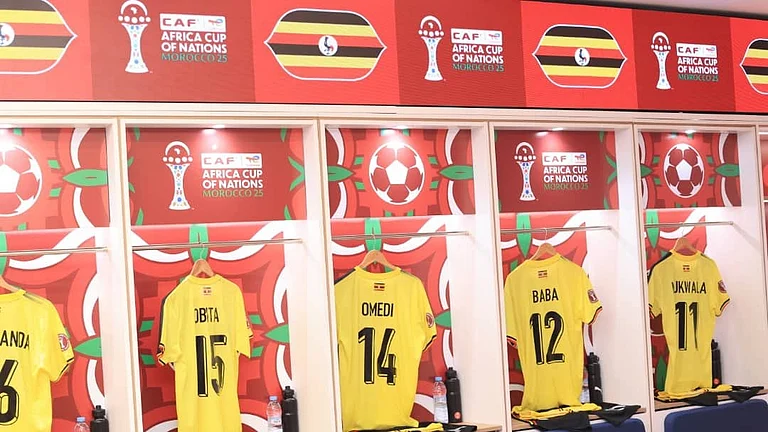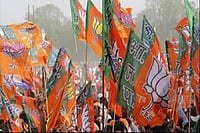ELECTIONS in India have mostly been fought on food prices. With inflation measured in wholesale prices already topping 8 per cent, the highest in the past two-and-a half years, and giving an idle Opposition the much-needed handle to whip up public emotions, the next elections seem pretty much set to be fought on the runaway prices of onions and potatoes.
Last Tuesday (July 28), Congress president Sonia Gandhi jammed the heart of the capital by launching a frontal attack on the government on the issue that not only affects the heart of the voting public but also its stomach. A few days ago, Opposition parties stormed Parliament protesting that since the Budget was presented, onion prices had more than doubled and potato prices had gone up by 50 per cent in the capital. For the national picture, look at the wholesale (producers') price index (WPI), which says the current spurt of inflation (as of July 11) is fuelled mainly by a 71.5 per cent rise in vegetable prices since April 1998.
Last year this time, inflation was a much subdued 4.1 per cent. The previous high—8.3 per cent—was touched two years before that, in November 1995.
The spurt in prices has been rapid. A month ago, on June 13, inflation was 6.65 per cent. At the end of March, it was around 5.3 per cent. An increase of around three percentage points in the space of 15 weeks surely indicates some serious problems.
Practical economic wisdom: when demand for a product rises more than its supply, its price starts climbing. But people aren't consuming larger quantities of, say, onions and potatoes this year. The current infla-tion, independent and government economists aver, is because not only is the supply of products to the market poor, even the buyers have less money to buy them with. When such conditions continue for some time, the economy is in classic stagflation mode—inflation along with stagnation.
Says Suresh Tendulkar, professor, Delhi School of Economics: "The spurt in prices is mainly due to seasonal factors—unexpected rains affecting the rabi crop, and the output of some fruits and vegetables—and therefore, should run its course soon, provided the government can manage the supply-demand imbalances well." Which the government did for a while, by supplying onions and potatoes at slightly cheaper rates in Delhi, though it is still not known whether anybody benefited out of it.Finance minister Yashwant Sinha, while putting the blame squarely on the previous regime and the weather, has ruled out any more intervention.
Which is just as well. Most food articles, especially those getting costlier now like pulses, edible oils, and vegetables, are under free market trade and won't react to intervention. Efforts to set up parallel selling centres can only distort the market and cause diversion of controlled price products to the open market. It helps neither the common man nor the government. Indian agriculture is still not immune to the adverse impact of weather. Add to that weak infrastructure linkages. For instance, proper cold storage chains could have minimised the effect of supply glitches of potatoes. An even better idea is to open up and widen the market, by allowing free trade in agricultural produce both inside and outside the country which India still doesn't allow.
A NUSHREE Sinha, senior economist at the National Council of Applied Economic Research, thinks inflation may average out to 8-8.5 per cent in the full fis-cal year, the rate the government assumed while drawing up its Budget. But, says Sinha, "since we started out with 5 per cent, the average rate implies a high of up to 12 per cent some time in the year". So while he may be right in ascribing the causes of the current inflation to past incidents, the bottling of the inflation genie will depend on a host of factors which, regrettably, will need his intervention.
The unseen suspects are all hidden in the economy. Explains Tendulkar: "Inflation is triggered by specific, sectoral supply-demand imbalances, but after that, monetary factors play a significant role in containing or whetting the pressure on prices." Foremost among which is government expenditure. This is because our governments have been spending much more than they earn, and most of this expenditure is funded by debt.
So much so that interest payments now account for a whopping 82 per cent of our fiscal deficit (see chart: Doomed to Debt). In other words, the bulk of what we borrow every year now goes to pay the interest on past loans. Throughout the nineties, interest payment has hovered around 80 per cent. It eats up half our revenue income and, since 1995-96, is actually more than our plan expenditure—the government's asset-creating spending—every year.
According to a Prime Database study, more than a third of the capital raised in 1997-98 was in the form of debt. Of this, the government's share was 84 per cent, or Rs 60,000 crore. Yet, a rising government hunger for funds has not been translated into monetary expansion (see chart: Greedy for More). While M3—broad money supply—has ballooned, M1—money with the public—has remained stagnant, rather severely curtailed after a 25 per cent growth in 1994-95. Bank credit to the commercial sector has been erratic, and net RBI credit to government has expanded out of the same money stock. Obviously then, interest rates have risen, and the value of the rupee has eroded.
Last year, for instance, the government borrowed at an average interest rate of 12 per cent, which was higher than the nominal growth of GDP (GDP measured in rupees and unadjusted for inflation). The most recent offering of government paper was made at 11.75 per cent (six-year bonds) and 12.22 per cent (10-year bonds), implying that the average interest rate has inched up higher now. Yet, not too many players were interested, and the RBI, which was managing the offer, had to finally pick 40 per cent of the total amount itself.
Last year, the government's market loans overshot Budget estimates by 30 per cent. This year, it has already reached 60 per cent of its borrowing target of Rs 80,000 crore. And there are several pressure areas for the fiscal deficit—the Budget giveaways, a depressed economy yielding little revenue income so far, and, as Tendulkar says, "an underestimated defence outlay with the finance minister hinting at later adjustments if necessary".The business of managing the economy has also become more complex. Says Tendulkar: "With the money, forex and capital markets getting interlinked, macro management has become all the more difficult today."
The government, despite the RBI's furious signals, has seemingly failed to grasp the simple economics of the money market. Since its demand for money (that is, borrowings) is growing faster than the supply, the price of money (that is, the interest rate) will rise. Big depositors are already commanding the spread they want with many banks, notably private sector ones. From here to a higher lending rate is but a short step. And these higher rates will be passed on to consumers by the borrowers, which means higher prices. The fact of the matter is that the government has to manage its own finances better, has to borrow less. As former deputy governor S.S. Tarapore said recently, "You can't make an omelette without breaking an egg."
RBI governor Bimal Jalan would agree with that, but he's faced with an unenviable option. He can curb money supply and risk stagnation, or expand credit and fan prices even more. For, while a little inflation is good for the economy, spiralling prices hit consumer expectations. They curb expenditure and save to hedge against inflation. That's what they did last year. The more expensive other liabilities of the government—small savings and public provident fund, savings instruments which the government actually discourages—overshot Budget estimates by 81 per cent. Hindsight proves that these investors were wise.


























